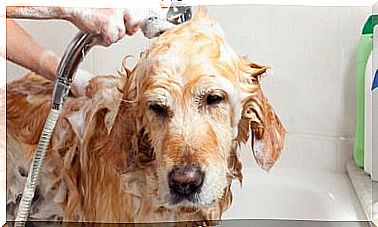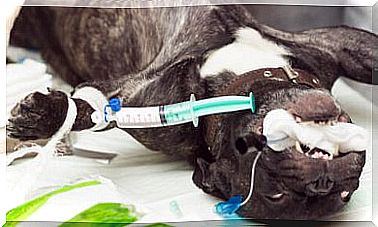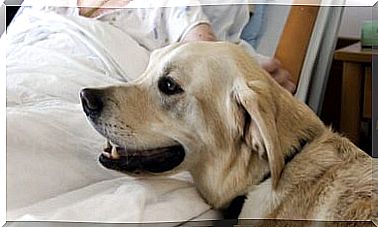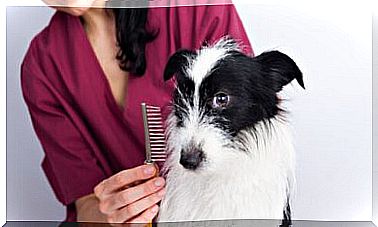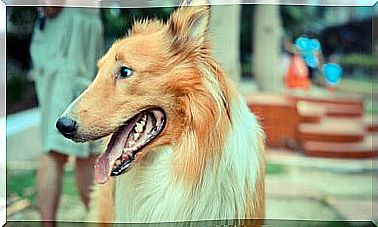Chemotherapy For Dogs
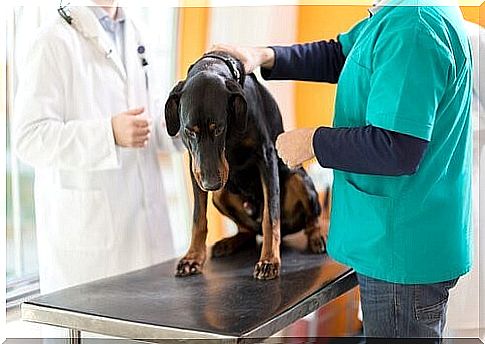
While chemotherapy can cause side effects in dogs (5% of the time), the success rate is close to 80%.
In dogs, chemotherapy is mainly used to treat lymphoma or mastocytoma. Malignant lymphomas are neoplasms that can damage the liver and spleen, among other things.
A mastocytoma is a tumor that arises from the mast cells of the immune system. It can spread to various organs and requires prompt treatment.
In both cases, chemotherapy can be carried out with about 80% success. This type of treatment can also be used for other cancers. Here some examples:
- Skin cancer
- Breast cancer
- Tumors on the head or neck
- Testicular cancer
- Bone cancer
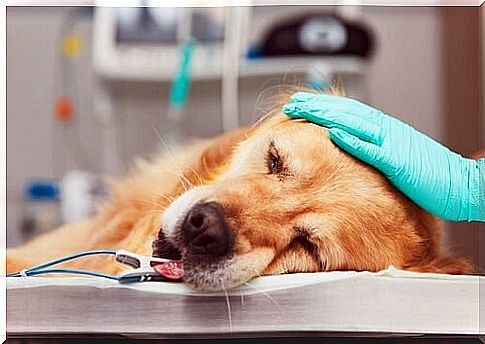
Does a dog with cancer always need chemotherapy?
No. Chemotherapy is one of the possible therapies for cancer in dogs, but its use must be evaluated by the veterinarian based on the development of the cancer in the organism and the health of each dog.
In general, chemotherapy is recommended in the following cases:
- When the tumor affects multiple organs or expands in the body. Or when the tumor cannot be surgically removed, such as in the case of lymphoma.
In these cases, chemotherapy is usually the best alternative to fight the disease.
However, if the cancer is advanced, metastasized, or the dog is already very weak, chemotherapy is usually not advisable.
- When surgery cannot completely remove the tumor.
In this case, the veterinarian may perform chemotherapy after the surgery to complete the removal of the cancer cells.
- If the tumor is too large to be surgically removed, chemotherapy can reduce it.
Depending on the response to the treatment, the veterinarian will analyze the feasibility of surgery after chemotherapy and then possibly remove the smaller tumor.
- After removal of a tumor. Even if the surgery is successful and the tumor has been removed, the veterinarian may prescribe chemotherapy to remove the remaining cancer cells. In this way, the risk of tumor formation again is prevented.
How does chemotherapy work in dogs?
The cancer cells grow abnormally, they multiply much faster than normal cells. The goal of chemotherapy is to slow growth and eliminate these cells.
Specific drugs are used to destroy malignant cells.

In practice, chemotherapy is more effective for young and small tumors that show intense cell division activity.
In advanced cancer, cancer cells slow down their spread. In this case, chemotherapy drugs cannot differentiate between malignant and normal cells.
Does chemotherapy in dogs have side effects?
As with almost all drug treatments, chemotherapy has some side effects. However, it is estimated that only 5% of the animals show such negative reactions after treatment.
The main side effects of chemotherapy in dogs include:
- Food and digestive problems : loss of appetite, diarrhea, nausea and vomiting. Fortunately, there are many medications and some natural supplements available to relieve discomfort.
- Immune System Weakness : Chemotherapy can cause some dogs to have weak immune systems. This makes them more susceptible to all kinds of diseases.
- Hair Loss : It is rare for dogs to lose their fur during chemotherapy. However, some skin changes can occur. In some cases, the hair grows back with a different texture and color.
Scientific advances have greatly improved treatment options, which also makes chemotherapy in dogs easier. As a result, the prognosis for cancer is much more positive than in the past.
